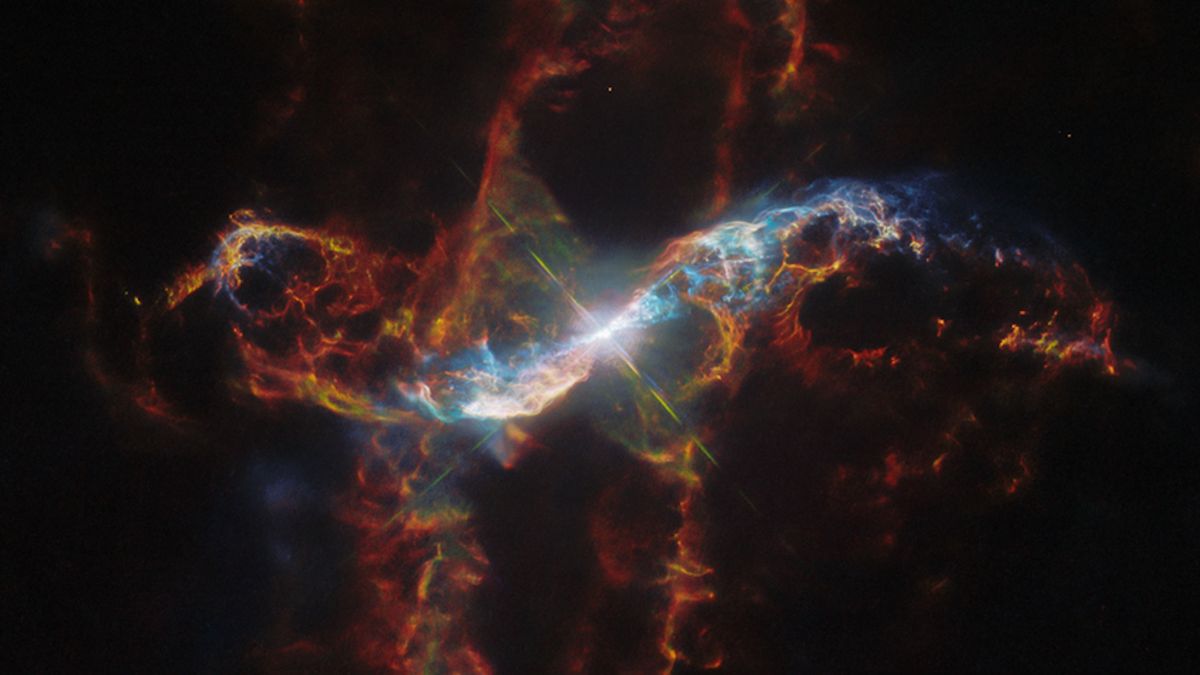Hubble Telescope sees 'stellar volcano' erupt in amazing colors (video, photo)
By Sharmila Kuthunur published 41 minutes ago
The nebula, R Aquarii, looks like 'a lawn sprinkler gone berserk.'
The Hubble Space Telescope has captured an intricate portrait of two nearby stars that have been in close contact for centuries, revealing once again the complex yet volatile relationship of a stellar duo.
The striking, hour-glass-shaped nebula seen in the new image was forged from the centuries-long interaction between its two distinct occupants: a compact, largely unchanging white dwarf and its companion star, an aging red giant that has swelled to more than 400 times our sun's size and dims and brightens over a fairly long period of 387 Earth days.
The star system, known as R Aquarii, resides about 710 light-years from Earth in the constellation Aquarius. It belongs to the symbiotic class of variable stars, a classification borrowed from the biological term "symbiosis," which refers to two organisms of different species coexisting close to one another.

NASA's Hubble Space Telescope view of the binary star system R Aquarii, one of the most rambunctious stars in our galaxy, weaving a huge spiral pattern among the stars. (Image credit: NASA, ESA, Matthias Stute , Margarita Karovska , Davide De Martin (ESA/Hubble), Mahdi Zamani (ESA/Hubble))
Indeed, the white dwarf swings close to the red giant during its 44-year orbit, funneling material onto its surface, occasionally exploding like "a gigantic hydrogen bomb," the Hubble team said in a recent statement.
The outburst blasts into space twisted, geyser-like streamers of glowing gas that make the region look like "a lawn sprinkler gone berserk," the statement read. The ejected material shoots into space at over 1 million mph (1.6 million kph), which is "fast enough to travel from Earth to the moon in 15 minutes!"
More:
https://www.space.com/hubble-telescope-stellar-volcano-video
